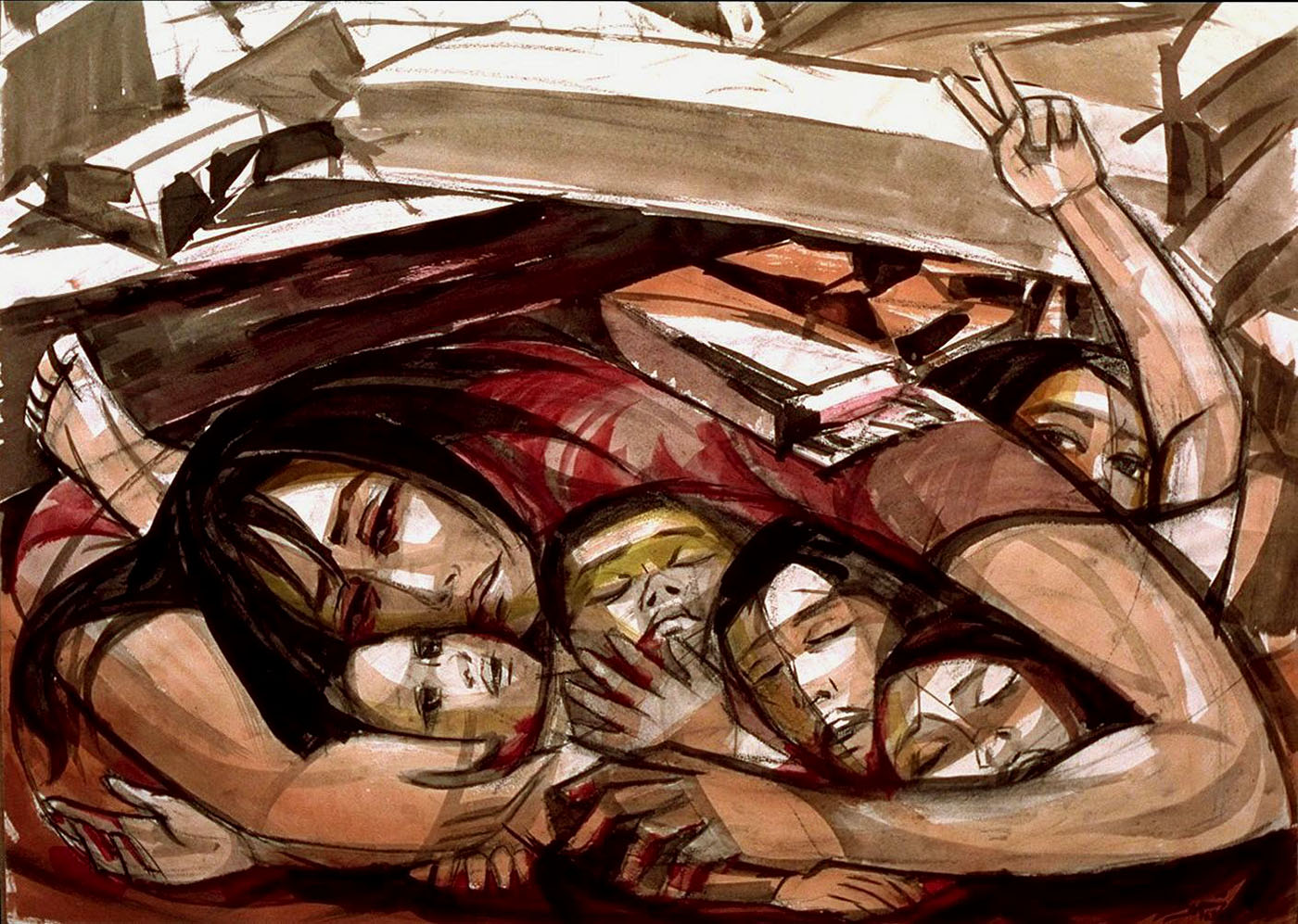For Gaza, the terms “humanitarian pause” and “ceasefire” may not be enough and might even be used as a fig leaf for forced displacement.
Adrian Kreutz, Enzo Rossi and Lillian Robb
Calls for a ceasefire in Gaza resonate more and more across the political spectrum. But Israel won’t accede to them, and has granted just brief “humanitarian pauses” to its onslaught on Gaza. It is worth first defining what we mean by the terms “humanitarian pause” and “ceasefire,” before dwelling on why humanitarian pauses are not enough, and might even be used as a fig leaf for forced displacement. Nor will just any ceasefire suffice.
In legal terms, a ceasefire agreement indicates a temporary or permanent cessation of armed conflict, with or without a normalization of relations. A humanitarian pause may precede a ceasefire. For example, in Indonesia, in 2000, the parties could not agree to the term ceasefire and so observed an “humanitarian pause” without settling key political questions. The pause did not last, and progress towards peace stalled until a third-party mediator reversed the sequence towards peace via a new formula: “Nothing is agreed until everything is agreed.” This took years, and is an exceedingly tall order for the Palestine-Israel conflict, but it may still hold some lessons.
The difference between a ceasefire and a humanitarian pause is more political than legal. In the international law of armed conflict, they are sometimes used interchangeably. So, to understand what’s at stake we need to look at the politics — the power relations — behind the terms “humanitarian pause” and “ceasefire.”
The 4-hour daily humanitarian pauses granted by Israel may save some civilian lives in the short term, and that matters. But we must not lose sight of the humanitarian disaster endured by the Gazan population not least since 2007, when Israel withdrew from the Strip and blockaded it. We are referring, among other things, to the systematic lack of basic provisions: water, food, medication, electricity — severe scarcity engineered by Israel’s government. Many human rights organizations have investigated the conditions under the blockade and declared a humanitarian emergency long before the outbreak of the October war.
In fact, Netanyahu’s humanitarian pauses may make that disaster worse: given their vague legal status, humanitarian pauses can too easily be abused for unsavory political ends, while upholding a façade of compassion. In Gaza, there is reason to fear that the agreed humanitarian windows will lead to further forced displacement at gunpoint. Sitting Israeli security cabinet minister (and former head of Shin Bet) Avi Dichter indicated as much: “Gaza Nakba 2023. That’s how it’ll end.” The humanitarian corridors aren’t as humane as they sound. One may even question whether the present military operation really is primarily aimed at eliminating Hamas. After all the IDF themselves warned that “there is no military solution to the issue of the Gaza Strip” as recently as 2021.
A humanitarian pause, then, is at best not enough. Ceasefire agreements, on the other hand, almost always include substantive political conditions: the release of conflict-related prisoners, the right to return for refugees and displaced persons, provisions for the re-establishment of the administration over the territory, and the (re)formation of a national army. Elsewhere, agreements included demobilization and demilitarization. Beyond that, ceasefire agreements often include clauses on the prosecution of war criminals and humanitarian assistance. The term “humanitarian pause” escapes those political complexities.
The standard notion of ceasefire envisaged by the international law of armed conflict is not a good fit for the political reality in Israel and Palestine, either. For a start, ceasefire provisions establish the physical separation of forces. That raises the question of whether the “host state” consents to foreign military presence. But who even is the host state? And is it the same in Gaza as in the West Bank, given that the occupied status of the latter was agreed upon in the Oslo accords? Another ceasefire condition concerns the return of prisoners. Thousands of Palestinians are currently held in administrative detention in Israeli military prisons. These Palestinians are not, however, strictly speaking, considered prisoners of war. Nor are most of the Israeli hostages held by Hamas and other groups. The next issue concerns the return of refugees — a point many want to extend beyond the present situation of war to the Palestinian families displaced since 1948. The right of return is at the root of Palestinian grievances and cannot be evaded, even though it is incompatible with Zionist nationalism.
What is more, any possible ceasefire arrangement does not, as a matter of language or law, provide recognition of the slow-motion violent oppression perpetrated by Israel. Those forms of violence are not traditionally covered by a ceasefire model, which usually applies to conflicts between relatively well-matched military forces.
In short, the legal tools designed to regulate conventional armed conflict need to be tailored to the Gazan context. Any ceasefire like the ones we have seen over the last 15 years in Gaza won’t do. We have seen why: Israel will use its dominant position to turn the screws right up to an unbearable degree, but just below the bar of a ceasefire violation. And that may well trigger Hamas to breach the ceasefire, which would in turn trigger another onslaught, and so on, repeating the mistakes of 2009, 2014 and 2021. Urgency may lead us to support just any deal that relieves the civilian population from their suffering. But we must also keep the wider picture in sight and push for a ceasefire that constitutes an actual step towards an acceptable political solution.
The unfolding humanitarian catastrophe in Gaza comes on the back of many decades of systematic and violent oppressive practices, deep conflicts within both the Palestinian and the Israeli communities, and layers of festering scars from atrocities perpetrated on all sides. Only a politically ambitious, permanent, and third party-enforced ceasefire agreement with a pathway towards complete demilitarization of all factions stands a chance — however small — of establishing a lasting peace between the river and the sea.




